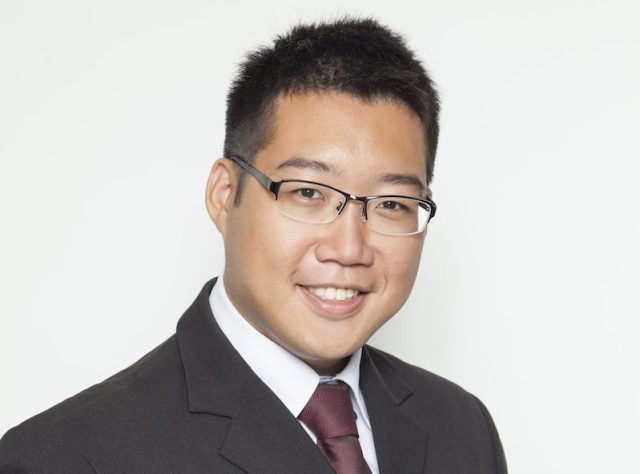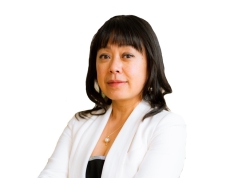Interview Nihon M&A Center Singapore Senior Consultant Daniel Lee: M&A & Succession Planning for SME Owners with Deal Size Ranging from S$50 Million to S$100 Million
An exclusive interview with Daniel Lee, Senior Consultant at Nihon M&A Center Singapore on M&A and succession planning for SME owners with deal size ranging from S$50 million to S$100 million ($37 million to $74 million). Nihon M&A is the largest SME M&A firm in Japan and probably the world. With over 700 consultants, more than 900 deals closed in the FY2021 and cumulatively more than 7,000 deals have been closed over 32 years since founding.
M&A ~ Mergers & Acquisitions
SME ~ Small & Medium Sized Enterprises
” Because of our focus on the SME space, the deal size is typically below SGD 100 million, or some even below SGD 50 million “
Daniel Lee, Senior Consultant (M&A) at Nihon M&A Center Singapore

Daniel Lee is a Senior Consultant (M&A) at Nihon M&A Center Singapore. Nihon M&A Center Singapore was established in 2016, and is the first overseas presence of Nihon M&A outside of Japan.
Nihon M&A is the largest SME M&A firm in Japan and probably the world. With over 700 consultants, more than 900 deals closed in the FY2021 and cumulatively more than 7,000 deals have been closed over 32 years since founding.
- Visit Website: Nihon M&A
- Free Preliminary Evaluation: Click here
Key Highlights
On Nihon M&A Center Expertise
- Nihon M&A– We are practically the largest SME M&A firm in Japan and probably the world. With over 700 consultants, more than 900 deals closed in the FY2021 and cumulatively more than 7,000 deals have been closed over 32 years since founding.
- Nihon M&A Center Singapore – We primarily advise on transactions involving Japanese companies investing in or acquiring Singapore and Southeast Asian companies.
- Typical deal size – Because of our focus on the SME space, the deal size is typically below SGD 100 million, or some even below SGD 50 million ($37 million to $74 million).
- Sector Focus – We are sector agnostic. When we closed more than 7,000 deals since founding as a group, we pretty much touch almost every industry. In Southeast Asia, our deals are still more grounded in the traditional sectors like manufacturing, IT and construction related
- Timeline to deal completion – We have transactions that closed in around 3 months from start to finish, and transactions that drag on for a few years … … Typically, from when Japanese companies start to show interest in Singapore companies, all the way until a transaction closes, it would take around 8 months to a year, when the first potential investor is the right one.
- Key Trend of Japanese Companies – Fast-growing company is utilizing and leveraging their existing resource in domestic market to expand and develop into more prospective overseas opportunity.
- Japan domestic market – The biggest difference from those countries (US, China and India) and Japan (and maybe Korea) is the growth opportunity in domestic market. Because of the ageing society and economic stagnation, generally, growth opportunity in domestic Japanese market is limited.
- Nihon M&A Center Singapore Focus – Most of the transactions we advise on would involve Japanese companies acquiring Singapore companies.
On M&A, Succession Planning for SME Owners (SGD 50 million to SGD 100 million)
” Many SME owners don’t realise that most of their net worth is actually trapped in the unrealised value of their companies “
- Finding Successor for SME – In Japan, due to the ageing population, a lot of SME owners are not able to find successors to take over their businesses. Singapore’s population demography is half a step behind, and increasingly it will become an issue as well.
- Why Japanese companies are investing into Southeast Asia – Driven by the saturated domestic market in Japan, and the desire to participate in one of the fastest growing regional economies in the world – Southeast Asia, Japanese companies are expanding in this region.
- Net worth of SME owners – Many SME owners don’t realise that most of their net worth is actually trapped in the unrealised value of their companies
- When to unlock value for SME owner – There must come a time when business owners must think from a wealth preservation perspective and use M&A to realise the value of their companies, and then financially diversify with the proceeds from the deal.
- Why M&A – M&A is so closely related to deeply personal motivations of the SME owners – Because it concerns not just the owners but also the family and intergenerational wealth planning.
- On M&A – M&A is like the process of getting married for two parties, and just like the marriage between couples, whether it will end up in one is unpredictable to a certain extent.
- Key Challenges – Takes time to find a suitable investor. Valuation expectations of the SME owners.
- On Succession to family members – The business owners must be able to identify the right successors, usually internally. They can perhaps hand over to their next generation of family members, assuming they are in the business. But not every generation is willing to take over the company.
- On Succession to key management – An alternative is to hand over the business to the key management who are not family related. But these are usually individuals whose pockets are not deep enough to cash out the shareholders at the valuation they want.
- Is the business sustainable – Regardless of who takes over the company, the overarching consideration is if the business can sustainably continue. And that is the main objective of succession planning
- Free Evaluation – We provide free preliminary valuation service via our website for companies to initiate the important conversation.
Collaboration on M&A & Succession for SME Owners
- Nihon M&A Center Network – Because nobody holds all the connections in the world, we work with other corporate and investment bankers for deal sourcing and collaboration.
- Working with legal / lawyers, tax, consultants – During an M&A process, other supporting services such as legal and tax are needed. We work closely with lawyers and consultants for a lot of our deals.
- Working with private bankers – When an M&A deal is done and with all the proceeds from it, SME owners will need to think of wealth management. We may liaise with private bankers thereafter as and when necessary.
- Inviting business owners & financial service providers – For any business owners or financial service providers, please feel free to link up, and I am sure we are well-placed to work on such opportunities together.
” for your own private company, until an investor comes along and put an offer on the table, you can’t tangibly sense what it is “
Interview with Nihon M&A Center Singapore Senior Consultant Daniel Lee
On M&A & Succession Planning for SME Owners with Deal Size Ranging from S$50 Million to S$100 Million
1. Who are you, and what do you do? What do you specialise in?

Daniel: I am Daniel, Senior Consultant with Nihon M&A Center Singapore. I handle the entire transaction from start to end. As an M&A consultant, we are the first to shake our clients’ hands (even before they become our clients) and also the last to shake their hands in a transaction.
Nihon M&A Center (NMA) is one of the pioneer firms in focusing on SME M&A transactions in Japan. With over 700 consultants, more than 900 deals closed in the FY2021 and cumulatively more than 7,000 deals have been closed over 32 years since founding. We are practically the largest SME M&A firm in Japan and probably the world. Opening the first overseas office in Singapore in 2016, we have now regional offices in Malaysia, Thailand, Vietnam and Indonesia focusing on cross-border SME transactions. With our unparalleled network in Japan, we primarily advise on transactions involving Japanese companies investing in or acquiring Singapore and Southeast Asian companies. Visit: Nihon M&A
” we primarily advise on transactions involving Japanese companies investing in or acquiring Singapore and Southeast Asian companies “
The IPOs, capital markets and stock markets have broadly declined in 2022 with concerns of a possible recession. With the growth of private markets and ongoing next generation transfer (wealth, business, leadership), there must be plenty of opportunities for restructuring, acquisitions, mergers & growth.
2. What are some of your most recent deals in Southeast Asia? What are the deal size and sector?

Daniel: Generally, we are sector agnostic. When we closed more than 7,000 deals since founding as a group, we pretty much touch almost every industry. In Southeast Asia, our deals are still more grounded in the traditional sectors like manufacturing, IT and construction related, with most of the transactions involving matured SMEs. In terms of the size, because of our focus on the SME space, the deal size is typically below SGD 100 million, or some even below SGD 50 million ($37 million to $74 million). Even though many of the transactions would involve Japanese companies, the latest transaction I was involved is to advise in the sale of Fosta Pte Ltd, a geotechnical instrumentation and monitoring company in Singapore, to Element Materials Technology, a global testing, inspection and certification company headquartered in London, UK, majority owned by Temasek.
- Read: Fosta Pte Ltd sale to Element Materials Technology
- Read: Element Materials Technology Acquisition by Temasek
” we are sector agnostic. When we closed more than 7,000 deals since founding as a group, we pretty much touch almost every industry “
Nihon M&A Southeast Asia Deals in 2021 & 2022

3. What is the journey like with the founders? How long did it take (initial discussion, agreement, transaction, completion)? What were the challenges? What are the main goals of the transaction? What is the most notable deal so far?

Daniel: I will start off with a cliché that every deal is different. But it is true. We have transactions that closed in around 3 months from start to finish, and transactions that drag on for a few years. M&A is like the process of getting married for two parties, and just like the marriage between couples, whether it will end up in one is unpredictable to a certain extent. Typically, from when Japanese companies start to show interest in Singapore companies, all the way until a transaction closes, it would take around 8 months to a year, when the first potential investor is the right one.
” M&A is like the process of getting married for two parties, and just like the marriage between couples, whether it will end up in one is unpredictable to a certain extent “
This leads to one of the bigger challenges – it takes time to find a suitable investor. For SME transactions that tend to be smaller, the potential universe of investors that can be approached is significantly bigger. It may not be immediately apparent if certain companies make for good potential investors. For this reason, the initial funnel of gathering interests of potential investors must be sufficiently wide. We are well-placed to do so with over 700 consultants in Japan, but even with our unparalleled network, it still takes time and, undeniably, an element of luck too. Thus, we always try to seek our clients’ understanding on this.
Another challenge would be valuation expectations of the SME owners. All SME owners would like to be fairly rewarded for the effort they put into their companies throughout the years. Rest assured that with us as M&A consultants, we also strive for the best valuation possible, mutual understanding of certain realistic limits – not everyone is a Google or an Amazon. It’s also about having realistic valuation expectations throughout the transaction, especially during due diligence when valuation revisions can occur. We will always be there along the way to provide advice and ways to mitigate the situation, including the transaction structure itself. We provide free preliminary valuation service via our website for companies to initiate the important conversation.
- Visit Website: Nihon M&A
- Free Preliminary Evaluation: Click here
In Japan, due to the ageing population, a lot of SME owners are not able to find successors to take over their businesses. Singapore’s population demography is half a step behind, and increasingly it will become an issue as well. M&A will be one of the tools to resolve this. That is the most common goal of our transactions – to not only cash out the shareholders, but in a way that ensure they have a happy retirement thereafter when they know their companies can be in good new hands.
The transaction process is not an easy one and to journey it together with the SME owners brings us closer. An M&A transaction may not be the largest to the SME owners monetarily but at least emotionally it is, especially after investing all the effort to build a company into what it is. As their consultants, we are always happy for our clients when they are happy with a successful transaction. Each journey is so unique that they are all notable in their own ways. But the hard journey and the common destiny bonds us together.
Before 2020, technology, digital, artificial intelligence and disruption, were the main themes. Today, we have US/China tension, COVID-19, supply-chain challenges (Russia / Ukraine conflict) and transition to Net-Zero and ESG polices (Environmental, Social & Governance).
4. What has changed for the business/founder and M&A goals compared to before 2020? (Especially in 2022 alone, with you completing M&As for 4 companies). Are these distressed / growth M&As? Were they acquired by bigger Japanese firms? Or are they entering into Japan markets?

Daniel: With everything from geopolitical tensions to technological changes, SME owners must realistically expect tougher challenges to keep pace with rapidly changing business environment and think for themselves if they should continue to go at it alone or consider M&A as a tool to ensure business continuity. A deal we advised in the middle of COVID-19 pandemic, the client decided to pursue M&A to access operational capabilities and human resources needed to cater their strategic expansion of constructing wind power plants overseas, against the backdrop of the global trend toward de-carbonization (Read Case Study of Construction Industry in Singapore – Huationg Holdings). Even for those who are doing well currently, when they think of the near future, M&A becomes a viable, even necessary, consideration.
The truly large Japanese MNCs like the Sony and Hitachi have gone global a long time ago. Now, the mid-sized Japanese companies are not holding back on their investment plans and look for new strategic alliances with local and regional SMEs business even in an adjacent sector to find new growth avenues.
” Now, the mid-sized Japanese companies are not holding back on their investment plans and look for new strategic alliances “
We are always hearing about fast-growing companies from the United States, China, South Korea & India today. The phenomenal growth and popularity of Fast Retailing (Uniqlo – fashion & retail) and SoftBank (investment group) is rather unusual from a technology & efficiency-driven known country that produced some of the world’s greatest companies (Toyota, Mitsubishi, Honda, Sony, Panasonic, Canon).
5. What are the key driving trends for Japanese companies today? Any particular value-add, highlights or exciting stuff?

Daniel: Driven by the saturated domestic market in Japan, and the desire to participate in one of the fastest growing regional economies in the world – Southeast Asia, Japanese companies are expanding in this region. Organic growth is one way, but with the rapidly changing world, inorganic growth through M&A becomes increasingly necessary.
As mentioned, the biggest difference from those countries (US, China and India) and Japan (and maybe Korea) is the growth opportunity in domestic market. Because of the ageing society and economic stagnation, generally, growth opportunity in domestic Japanese market is limited. For example, both Uniqlo and Softbank, their main growth driver is overseas market, and their growth in domestic market is not that high.
So, I would say the key driving trend for fast-growing company is utilizing and leveraging their existing resource in domestic market to expand and develop into more prospective oversea opportunity.
” the desire to participate in one of the fastest growing regional economies in the world – Southeast Asia, Japanese companies are expanding in this region “
Japan is the 3rd largest economy in the world with GDP of $4.9 trillion (United States, China, Japan) and population of 125 million (11th largest). Japan is a huge market and also a very different market.
6. Are you actively helping companies enter into Japan? Or more of Japanese companies entering into Southeast Asia?

Daniel: Most of the transactions we advise on would involve Japanese companies acquiring Singapore companies. But from time to time, we do receive requests from local companies which want to expand into the Japan market. To adapt to a different and unique market quickly, M&A is sometimes the preferred tool. And not all conversations that start off with M&A will end up in one. In the end, it may make more business sense for both parties to pursue other business collaborations. With such a wide coverage in Japan across almost all sectors, and our existing relationships with decision makers of many Japanese companies, we are well poised to help local companies penetrate the Japan market as well.
” Most of the transactions we advise on would involve Japanese companies acquiring Singapore companies “
There are many areas to work on in a business apart from day-to-day business. When it comes to acquisition, growth & continuity, key areas to consider are Business Succession, Growth Strategy, Market Research, Due Diligence, Company Valuation processes. These are many issues, and poor strategy, advice and execution can destroy a business and relationship among the company leaders.
7. What are some of the most important things to consider?

Daniel: Most of the businesses in the world are SMEs and family-owned businesses. And I will answer from this perspective.
There are so many issues to look out for when running a business because it’s such a dynamic entity. So, hats off to the entrepreneurs who run such a difficult show. But I would just like to highlight one perspective from wealth management and preservation.
Most SME owners have painstakingly grown their companies over the years and have reached a certain stage when businesses are matured – the top and bottom line don’t really change much from year to year. However, with increasing uncertainty in the world and an open market like Singapore’s, business risks increase over the years and predictability of company performance drops. But many SME owners don’t realise that most of their net worth is actually trapped in the unrealised value of their companies which they have founded and is facing all these business risks. They don’t really feel it because SMEs are mostly private companies. If you invest in Apple stocks, you know what the share price is by the second. But for your own private company, until an investor comes along and put an offer on the table, you can’t tangibly sense what it is. So, there must come a time when business owners must think from a wealth preservation perspective and use M&A to realise the value of their companies, and then financially diversify with the proceeds from the deal.
And that’s why M&A is so closely related to deeply personal motivations of the SME owners. Because it concerns not just the owners but also the family and intergenerational wealth planning. This is one of the most important perspectives business owners should have when planning for their businesses.
” for your own private company, until an investor comes along and put an offer on the table, you can’t tangibly sense what it is “
Succession planning for businesses is taking place massively globally and in Southeast Asia, from small businesses, to SMEs to even large companies.
8. What are the biggest challenges? What are the most important things to focus on? And how likely will succession planning succeed or fail?

Daniel: Once again, I will answer from the perspective of SME business owners.
The business owners must be able to identify the right successors, usually internally. They can perhaps hand over to their next generation of family members, assuming they are in the business. But not every generation is willing to take over the company. Each successive generation gets better educated, and they have an unprecedented number of options to choose for their careers. In fact, most of the younger generations I spoke with do not want to take over the family business, especially those in the traditional industries. Some of them have been working in their family businesses since very young, but simply have different aspirations growing up. And others understand that being an employee is a different ballgame from being a business owner.
An alternative is to hand over the business to the key management who are not family related. But these are usually individuals whose pockets are not deep enough to cash out the shareholders at the valuation they want.
But regardless of who takes over the company, the overarching consideration is if the business can sustainably continue. And that is the main objective of succession planning – it’s a means to this end and not an end in itself. In an open market like Singapore’s, competition always exists. And any lucrative industry will quickly find itself swarmed with parties looking for a slice of the pie. The headwinds businesses face gets exacerbated when the industry starts to consolidate, usually triggered when the top few players get backing from financial or strategic investors. In such an open environment, there must come a time when SME owners have to consider M&A as a viable option to ensure business continuity instead of going at it alone.
I am not pessimistic by nature, but we have to be realistic in assessing the situation. If we can weigh the business risks pragmatically and consider options such as M&A, SME owners can still make a decent and good living.
” most of the younger generations I spoke with do not want to take over the family business, especially those in the traditional industries “
9. Many founders, CEOs & entrepreneurs have the closest relationship with their Corporate Bankers, Investment Bankers, Lawyers, Accountants, Consultants & Private Bankers. How can they work with you?

Daniel: M&A is intricately tied to various commercial and personal aspects of SME owners. This feeds into the synergistic ecosystem of service providers.
Because nobody holds all the connections in the world, we work with other corporate and investment bankers for deal sourcing and collaboration. During an M&A process, other supporting services such as legal and tax are needed. We work closely with lawyers and consultants for a lot of our deals. When an M&A deal is done and with all the proceeds from it, SME owners will need to think of wealth management. We may liaise with private bankers thereafter as and when necessary.
So even before an M&A deal is initiated, till way after an M&A deal is done, we link up closely with other service providers and vice versa. This creates a virtuous cycle, in which all of us provide our respective specialised services to cater to various needs of the SME owners at different stages of their lives. And this is really how relationships and networks build up – they are mutually beneficial.
” We work with other corporate and investment bankers for deal sourcing and collaboration … … When an M&A deal is done and with all the proceeds from it, SME owners will need to think of wealth management. We may liaise with private bankers thereafter “
10. Last word: Any message or thoughts for founders, CEOs & entrepreneurs?

Daniel: The founders of Nihon M&A Center had the foresight to provide M&A services for the underserved market of SMEs 32 years ago. We have grown tremendously since then, and it remains our focus to this day.
As every country’s economy and population mature, the need for M&A in the SME space will only increase. SME transactions are fundamentally different from large M&A transactions. With our unparalleled network, scale and reputation in Japan, our success feeds on itself. For any business owners or financial service providers, please feel free to link up, and I am sure we are well-placed to work on such opportunities together.
” For any business owners or financial service providers, please feel free to link up “
2022 Succession Planning Reports:
- Credit Suisse Succession Planning Study 2022: Most Popular Succession Plan is to Handover to Family or Employees, Key Issues Include Strategic, Tax, Financial & Preparations
- PwC Global NextGen Survey 2022 & China Report: 94% of 2nd Generation are Leading Family Businesses & 31% Have Family Office, 60% of Hong Kong Business Have Family Office
- UBS Investor Watch: 4,500 HNW Investors on Wealth Transfer Plan, 50% of HNWs Withhold Transfer Plan from Heirs
This is an exclusive interview with Daniel Lee, Senior Consultant at Nihon M&A Center Singapore on M&A and succession planning for SME owners with deal size ranging from S$50 million to S$100 million. Nihon M&A is the largest SME M&A firm in Japan and probably the world. With over 700 consultants, more than 900 deals closed in the FY2021 and cumulatively more than 7,000 deals have been closed over 32 years since founding.
- Visit Website: Nihon M&A
- Free Preliminary Evaluation: Click here
About Nihon M&A Center Singapore
 Established in 2016, the Singapore office is the first overseas presence of Nihon M&A outside of Japan. With increasing interest in Japanese companies trying to expand in Southeast Asia, and preferring Singapore as the first stop into this region, the role of connecting Japanese companies with Singapore companies has become increasingly important. Since then, the Singapore office has grown, rapidly closing multiple deals every year since inception. There is a good mix of both Japanese and local consultants, which not only provides good insights into Japanese companies, but good understanding of local companies as well. Leveraging on the success of the Singapore office, branches have also been set up in Thailand, Malaysia, Indonesia, and Vietnam. For more information, please visit the website.
Established in 2016, the Singapore office is the first overseas presence of Nihon M&A outside of Japan. With increasing interest in Japanese companies trying to expand in Southeast Asia, and preferring Singapore as the first stop into this region, the role of connecting Japanese companies with Singapore companies has become increasingly important. Since then, the Singapore office has grown, rapidly closing multiple deals every year since inception. There is a good mix of both Japanese and local consultants, which not only provides good insights into Japanese companies, but good understanding of local companies as well. Leveraging on the success of the Singapore office, branches have also been set up in Thailand, Malaysia, Indonesia, and Vietnam. For more information, please visit the website.
Sign Up / Register
Caproasia Users
- Manage $20 million to $3 billion of assets
- Invest $3 million to $300 million
- Advise institutions, billionaires, UHNWs & HNWs
Caproasia Platforms | 11,000 Investors & Advisors
- Caproasia.com
- Caproasia Access
- Caproasia Events
- The Financial Centre | Find Services
- Membership
- Family Office Circle
- Professional Investor Circle
- Investor Relations Network
Monthly Roundtable & Networking
Family Office Programs
The 2025 Investment Day
- March - Hong Kong
- March - Singapore
- July - Hong Kong
- July - Singapore
- Sept- Hong Kong
- Sept - Singapore
- Oct- Hong Kong
- Nov - Singapore
- Visit: The Investment Day | Register: Click here
Caproasia Summits
- The Institutional Investor Summit
- The Investment / Alternatives Summit
- The Private Wealth Summit
- The Family Office Summit
- The CEO & Entrepreneur Summit
- The Capital Markets Summit
- The ESG / Sustainable Investment Summit







































